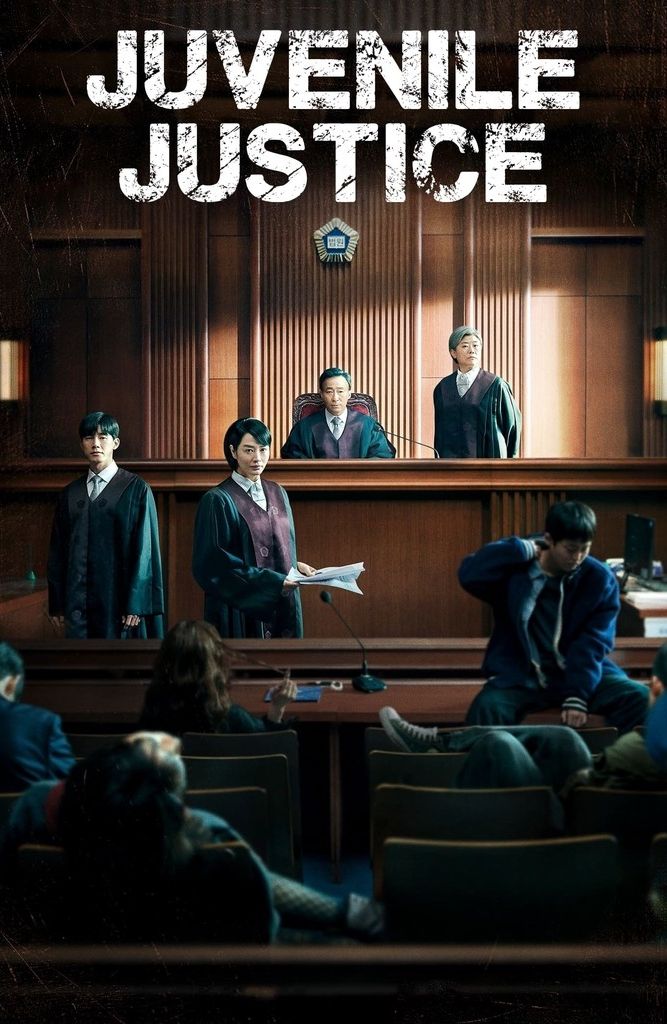Author: Deepak Kumar Gupta, United University, Prayagraj
To the Point
The 1992 Harshad Mehta Scam is frequently considered the most notorious financial deception in Indian history. It exposed the loopholes in the Indian banking and financial systems, leading to massive investor losses and widespread panic in the capital markets. Harshad Mehta manipulated the stock market using fraudulent banking instruments, resulting in a ₹4,000 crore scam that triggered long-lasting reforms in financial regulations, capital market transparency, and the legal framework surrounding securities trading.
Abstract
The Harshad Mehta Scam of 1992 stands as one of the most defining moments in India’s financial and legal history. It involved a complex scheme of stock market manipulation facilitated through systemic exploitation of loopholes in the banking sector—particularly misuse of Ready Forward Deals and fake Bank Receipts. At the center was Harshad Mehta, a charismatic stockbroker who created an illusion of infinite liquidity, causing the share prices of many companies to skyrocket. When the fraud was exposed, it not only led to a market crash but also resulted in the erosion of investor confidence, the collapse of smaller financial institutions, and the exposure of regulatory ineffectiveness.
This article delves deep into the anatomy of the scam, analyzing the legal framework existing at the time, and how the scam evaded regulatory detection. It further explores the consequences faced by banks, regulators, investors, and the judiciary. The scam brought about a wave of financial reforms, including the empowerment of the Securities and Exchange Board of India (SEBI), the creation of the National Stock Exchange (NSE), dematerialization of stock, along with legal advancements such as the creation of the Special Court under the TORTS Act of 1992.
Through a legal lens, this paper assesses the significance of the scam in shaping India’s securities law jurisprudence and creating stronger institutional checks. The Harshad Mehta case has since remained a foundational study in financial crime, corporate ethics, and regulatory policy. It continues to underscore the importance of transparency, accountability, and timely legal intervention in preventing white-collar crimes in emerging economies.
Use of Legal Jargon
Securities Fraud: A white-collar crime involving deception in the stock or commodities markets.
Bank Receipts (BRs): Documents issued by banks acknowledging the holding of government securities on behalf of another bank.
Ready Forward Deal (RFD): A type of temporary loan in which one bank provides funds to another by selling securities under a repurchase agreement.
Intermediary Liability: The accountability of brokers and financial intermediaries under civil and criminal statutes.
Insider Trading: The buying or selling of a public company’s shares using significant, undisclosed information.
Misappropriation: Improper utilization of someone else’s money for personal gain.
Systemic Risk: Danger of the entire financial system collapsing because of the breakdown of one entity or a group of entities.
The Proof
The scam came to light when Sucheta Dalal, a journalist at The Times of India, exposed how Harshad Mehta had illegally siphoned funds from several banks by exploiting the loopholes in the banking system. Mehta used fake Bank Receipts and forged securities to raise funds, which he then invested in the stock market to manipulate share prices, including those of ACC, Sterlite, and Videocon. Once the prices reached an artificial high, he sold off the shares, reaped enormous profits, and caused a market crash.
Case Details and Mechanism of the Scam
1. Background
Harshad Mehta was a registered stockbroker and a member of the Bombay Stock Exchange. Starting his career in the 1980s, Mehta quickly gained prominence and became known as the “Big Bull” for his bullish investment strategy. He manipulated public perception and investor behavior through strategic buying, lobbying, and media presence.
2. Key Modus Operandi
a. Use of Ready Forward Deals
Ready Forward Deals were temporary loans among banks guaranteed by government securities.
Mehta used this system to orchestrate fake transactions between banks.
He arranged for one bank to lend money to another but used forged Bank Receipts instead of actual securities.
b. Fake Bank Receipts
Bank Receipts were issued by small banks (e.g., Bank of Karad, Metropolitan Co-operative Bank) without backing of government securities.
These receipts were used as collateral by Mehta to obtain funds from large public sector banks.
c. Stock Market Manipulation
The illegally acquired funds were diverted into the stock market.
Mehta heavily invested in selected blue-chip companies, inflating prices by up to 400%.
Notable example: The price of ACC jumped from ₹200 to ₹9,000.
3. The Collapse
When banks began to demand repayment, Mehta failed to produce genuine securities.
Panic spread in the market, leading to a crash and the BSE Sensex falling over 2,000 points.
Over ₹100,000 crores in market capitalization was wiped out.
• Numerous banks found themselves holding valueless Bank Receipts and lacking any collateral.
Legal Proceedings and Regulatory Response
1. Role of SEBI and RBI
SEBI was a relatively powerless watchdog before 1992.
Post-scam, SEBI was granted statutory powers through the SEBI Act, 1992.
RBI tightened norms for interbank securities transactions.
2. CBI Investigations
The Central Bureau of Investigation (CBI) registered more than 70 criminal cases against Harshad Mehta and his associates.
Charges included criminal conspiracy, cheating, forgery, and misappropriation under:
Indian Penal Code (IPC), 1860
Prevention of Corruption Act, 1988
Securities Contracts (Regulation) Act, 1956
3. Judicial Proceedings
In November 1992, Harshad Mehta was apprehended and subsequently released on bail.
He was found guilty in several cases but continued to face trial in over 27 criminal cases and 200 civil suits.
He died in custody on December 31, 2001, from a heart attack.
4. Disgorgement Proceedings
SEBI directed the seizure of assets to recover payments owed to financial institutions and investors.
A special court under the Trial of Offences Relating to Transactions in Securities Act (TORTS), 1992, was constituted to deal with the scam.
Impact on Indian Law and Policy
1. Financial Sector Reforms
Statutory empowerment of SEBI under the SEBI Act, 1992.
Establishment of National Stock Exchange (NSE) to introduce transparency.
Dematerialization of shares to prevent fake or duplicate shares.
2. Banking Reforms
RBI issued stringent guidelines for BR issuance.
All interbank securities transactions had to be routed through the SGL (Subsidiary General Ledger) account.
3. Investor Protection
SEBI introduced new rules for mutual funds, IPOs, and stockbrokers.
Surveillance systems were modernized with automated online trading and real-time data analysis.
4. Strengthening Legal Infrastructure
Introduction of TORTS Act, 1992, for speedy trial of securities fraud cases.
Amendments to Companies Act and Income Tax Act to regulate corporate disclosures.
Case Laws
CBI v. Harshad Mehta (1992) – CBI registered several FIRs under IPC Sections 420 (cheating), 467 (forgery), and 120B (criminal conspiracy).
Union of India v. Harshad Mehta (2001) – Supreme Court upheld the jurisdiction of special courts under the TORTS Act.
SEBI v. Harshad Mehta & Ors. (1998) – SEBI’s enforcement order for disgorgement and barring from securities trading was upheld.
Canara Bank v. Union of India (1995) – Involved questions around the liability of banks that issued fraudulent BRs.
Standard Chartered Bank v. Andhra Bank Financial Services Ltd. (2005) – Intermediary liability and due diligence obligations of financial institutions discussed.
Conclusion
The Harshad Mehta Scam did not merely represent a case of individual fraud; it exposed an entire ecosystem built on weak regulation, complacency, and a culture of trust that lacked verification. Harshad Mehta exploited systemic flaws in both the banking and securities markets at a time when India was transitioning economically, with regulatory institutions still in their formative stages.
The ripple effects of this scandal were monumental—ushering in reforms that laid the foundation for modern financial governance in India. The scam prompted the government to grant statutory powers to SEBI, establish the NSE as a competitor to the BSE with electronic trading systems, enforce dematerialization of securities to prevent forgeries, and regulate the interbank transaction system more stringently under the direct watch of the RBI.
From a legal standpoint, the scam prompted significant litigation, both civil and criminal, and led to the creation of the Special Court under the TORTS Act for fast-track handling of scam-related cases. The judgment in these cases set important precedents for corporate and intermediary liability, investor protection, and the accountability of banks and financial institutions.
The legacy of the Harshad Mehta scam continues to influence policymaking, corporate governance norms, and investor behavior. It remains a cautionary tale—a reminder that unchecked ambition, when combined with regulatory laxity, can imperil an entire economic system. At the same time, it demonstrates the resilience of Indian democracy and legal institutions in course-correcting, reforming, and learning from past errors.
The need for robust financial oversight, regulatory vigilance, and strict enforcement mechanisms has never been more crucial than in today’s fast-evolving fintech-driven markets. The lessons from 1992 remain deeply relevant, ensuring that history does not repeat itself.
FAQS
1. What was the Harshad Mehta scam about?
It was a stock market fraud in 1992 where Harshad Mehta manipulated securities transactions using fake bank receipts and diverted funds into the stock market, inflating prices.
2. How much money was involved in the scam?
Approximately ₹4,000 crore was directly involved, but the overall market impact was over ₹1 lakh crore.
3. What role did SEBI play?
SEBI’s role was minimal before the scam but became significantly empowered after 1992, gaining statutory powers to regulate and monitor the securities market.
4. Did Harshad Mehta go to jail?
Yes, he was arrested in 1992, released on bail, and faced multiple trials until his death in 2001.
5. What were the key reforms introduced post-scam?
SEBI Act, 1992
TORTS Act, 1992
Introduction of dematerialized shares
Real-time surveillance systems
Tightened RBI norms on banking transactions
6. What is the TORTS Act?
The Securities Fraud Trial Act of 1992 was established to promote the swift adjudication of cases involving securities fraud.
7. Is the Harshad Mehta scam relevant today?
Yes, it serves as a case study in financial fraud, regulatory failure, and legal reform. The scam is often referenced when discussing corporate governance and white-collar crime in India.




